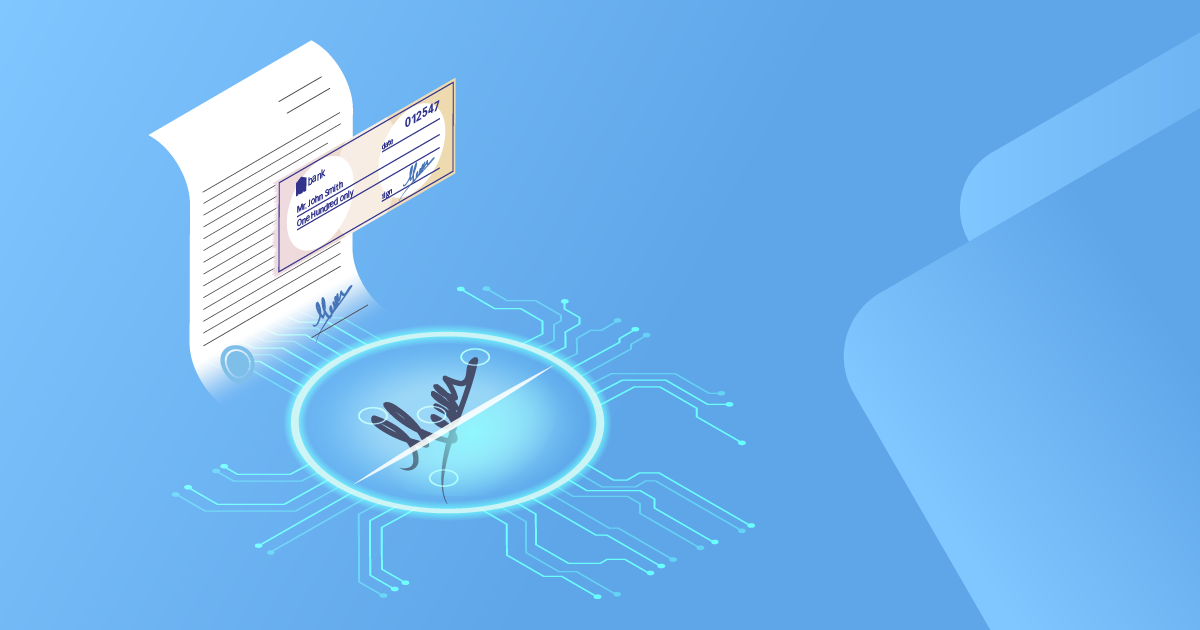
February 10, 2024
Forgery Antidote: How Intelligent Signature Recognition Fortifies Security

Introduction
In an age dominated by digital communication and electronic transactions, the security of handwritten signatures remains a critical concern. The persistent threat of forgery jeopardizes the integrity of legal documents, contracts and various forms of transaction. To address this challenge, the integration of intelligent signature recognition has emerged as a pivotal tool in fortifying security and combating forgery.
Understanding the Threat of Forgery
Forgery, the act of creating false copies of handwritten signatures or documents with fraudulent intent, poses a constant challenge throughout history. With technological advancements, traditional methods of combating forgery have become insufficient, prompting the need for innovative solutions to protect individuals and organizations.
One of the escalating threats in today’s fast-paced environment is the vast volume of transactions that need to be processed in a short period of time. In situations where thousands of transactions occur within tight timeframes, the risk of forgery intensifies. The critical need for manual validation of signatures in such contexts creates an environment conducive to potential fraud, as individuals may seek to exploit the overwhelming workload.
The Processing of Signatures: Traditional vs. Novel
Intelligent signature recognition leverages cutting-edge technologies, such as artificial intelligence and machine learning, to analyze and authenticate handwritten signatures. Unlike traditional methods, which rely on simple comparisons, this technology analyzes various elements within a signature. By creating a unique profile for signatures, the system can accurately distinguish between genuine signatures and forgeries.
The Role of Artificial Intelligence and Machine Learning
Artificial intelligence plays a pivotal role in enhancing the accuracy and efficiency of signature recognition. Machine learning algorithms enable the system to continuously learn and adapt to evolving patterns in an individual’s signature over time. This dynamic learning process enhances the system’s ability to identify even the most subtle changes or variations in a person’s handwriting, making it significantly more reliable than static, rule-based systems.
The Advantages of Intelligent Signature Recognition
- Enhanced Security
One of the primary advantages of intelligent signature recognition is the heightened level of security it provides. The sophisticated analysis of various signature characteristics ensures that only genuine signatures are accepted, minimizing the risk of unauthorized access or fraudulent activities.
- Automation and Digital Transformation
The adoption of intelligent signature recognition aligns fully with the broader goal of automation and digital transformation. By seamlessly integrating into existing systems, this technology facilitates the transition toward more efficient and technologically advanced workflows, reducing reliance on manual processes.
- Fast and Efficient Processing
Overseeing a massive load of signatures manually can be a daunting task, leading to delays and potential errors. Intelligent signature recognition introduces a streamlined process that significantly accelerates signature authentication. This speed is particularly valuable in contexts where time-sensitive transactions are crucial.
- Cost-effective
While advanced in its capabilities, intelligent signature recognition proves to be a cost-effective solution in the long run. The automation of signature recognition reduces the need for extensive manual labor, saving organizations both time and resources.
Conclusion
In the relentless pursuit of fortifying security, intelligent signature recognition emerges as a technological advancement, providing a robust solution to combat forgery in an increasingly digital world. By harnessing the power of artificial intelligence and machine learning, this innovative approach enhances security measures, accelerates processing times and contributes to the overall integrity of handwritten signatures. As organizations continue to prioritize secure authentication methods, the integration of intelligent signature recognition stands out as a key element in safeguarding the trust and authenticity of critical documents and transactions, while propelling them towards automation and digital transformation.



